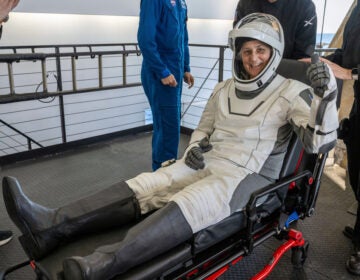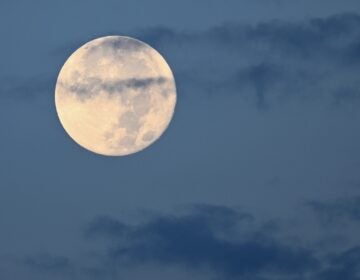Mercurial Ice and a Gigantic Black Hole
ListenAstounding! Water on the planet closest to the Sun? According to NASA , Mercury’s surface temp is -297 to 800F at the equator diurnal. But, like our moon, because of its axial verticality, craters at the poles remains in the shadow and are cold enough to retain water ice. In fact enough to cover an area as large as DC under 2miles of ice. This phenomenon was first detected decades ago, and has now been confirmed by MESSENGER data. What was once predicted by astronomers has also been confirmed: the biggest Black Hole Blast with an energy output a hundred times than that of the Milky Way has been found by using the ‘x-shooter at the Very Large Telescope at the Paranal Observatory in Chile, by Virginia Tech astronomers. This week don’t miss the parade of planets at the “Golden Hour” that starts at 5:30 AM. 5:30 to 6:30 am. And this Thursday you can see Jupiter with the big telescope at the Frankly Institute.
Photo Credit: NASA
WHYY is your source for fact-based, in-depth journalism and information. As a nonprofit organization, we rely on financial support from readers like you. Please give today.




